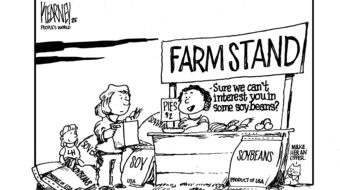WASHINGTON – The Great Recession, which officially lasted around two years and ended in mid-2009, produced a bleak aftermath of no jobs, declining median incomes and rising income inequality, a new Economic Policy Institute analysis says.
But in a Feb. 2 briefing on their latest policy paper on the slump, EPI analysts Heidi Shierholz and Rebecca Theis added that the continuing high joblessness the recession produced is not structural, since virtually every major industry sector has far more workers seeking jobs than it has available spots.
In a structural recession, they said, there would be a mismatch, with some industries facing shortages of workers – showing the need for education and retraining.
The EPI data show that 36 months after the Great Recession began, one of every 19 jobs present when it started in 2007 (5.2 percent) are gone. At a similar point after the 1981 Reagan recession’s start, the slump was over and jobs were up 4 percent. And 36 months after the first, officially shorter, Bush crash started in 2001, they were down 1 percent.
But the paper noted that recovery from that first Bush crash never really got off the ground, making the impact of the Great Recession, which also occurred under Bush, that much harder on workers and families when it finally hit.
“This one looked like a normal recession until October, 2008 when the financial crisis occurred,” Theis added. Then the bottom fell out, and “job loss was skyrocketing.”
As a result, even now, there are 4.4 job seekers for every vacancy. And besides the 14 million unemployed, there are another 11 million -12 million underemployed – including workers so discouraged they’ve stopped looking. Total of the two groups: one of every six workers. The jobless are staying jobless longer, too, the report notes.
The EPI analysts predicted that jobless rates would not decline any time soon, for two reasons. One is that private sector businesses are hiring relatively few workers – 100,000 or so per month, to take care of normal turnover. Businesses tell questioners the reason they don’t add more workers is there is no demand for their products.
The other is while the private sector hiring is slowly growing, state and local governments are firing people. Those governments, hit with a 31percent drop in revenues since the Great Recession began – jobless workers don’t pay income taxes and foreclosed houses don’t yield property taxes – have had to cut budgets by laying off workers and cutting programs. That’s even though demand for their services is rising.
“When will the economy come back? Eventually, but it’s happening too slowly to get back to normal any time soon,” Shierholz said.










